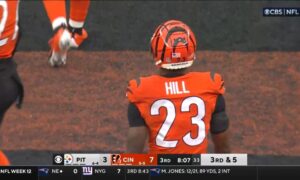I have received a few questions about the new salary cap floor, or minimum team cash spending, that kicks in 2013 so I will try to explain it to you the best that I can. I will also show you how it might impact the Pittsburgh Steelers in addition.
Let\’s first see what the CBA says on matter.
Section 9. Minimum Team Cash Spending:
(a) For each of the following four-League Year periods, 2013–2016 and 2017–2020, there shall be a guaranteed Minimum Team Cash Spending of 89% of the Salary Caps for such periods (e.g., if the Salary Caps for the 2013–16 and 2017–2020 are $100, 120, 130, and 150 million, respectively, each Club shall have a Minimum Team Cash Spending for that period of $445 million (89% of $500 million))
(b) Any shortfall in the Minimum Team Cash Spending at the end of a League Year in which it is applicable (i.e., the 2016 and 2020 League Years) shall be paid, on or before the next September 15, by the Team having such shortfall, directly to the players who were on such a Team’s roster at any time during the applicable seasons, pursuant to the reasonable allocation instructions of the NFLPA.
(c) Nothing contained herein shall preclude a Team from having Cash Spending in excess of the Minimum Team Cash Spending, provided that the Team complies with the accounting rules of the Salary Cap set forth in Article 13.
(d) If the NFL agrees, or a final judgment or award is entered by the System Arbitrator, that a Team has failed by the end of an applicable League Year to make the payments required to satisfy a Team’s obligations to pay the Minimum Team Cash Spending required by this Agreement, then, in the event the Team fails promptly to comply with such agreement, judgment or award, the NFL shall make such payment on behalf of that Team (such funds to be paid as salary directly to the players on such Team at the direction of and pursuant to the reasonable allocations of the NFLPA).
Basically the CBA states that each team must spend 89% of the total salary cap amount that they are allotted from years 2013-2016 and 2017-2020, which is two four-year periods, in cash. As the above salary cap example states in section (a), each team must spend $445 million of that $500 million in cash by the end of year four. That\’s cash, not cap space. So does each team have to spend 89% of their cap space in each and every one of those years? No, but it is advisable to stay on a plan close to that. A team doesn\’t want to get too far behind schedule and have to make it up in the final year by overpaying players, which in turn could hurt them cap wise in future years.
So what is considered cash? Cash is total base salary amounts paid to a player, signing bonus paid, roster bonuses, reporting bonuses, and workout bonuses. Keep in mind that cash dollars are different then cap dollars in a given year. If a team gives a player a $10 million signing bonus on a five-year contract in 2013 they will prorate that amount at $2 million a year for five years as far as the cap is concerned, but they will be credited with spending $10 million in cash in 2013 and 2013 only. Does that make sense so far? You should now understand the difference between cap dollars and cash dollars.
So what about teams that want to try and hoard cap space and cash? Hoard away, but eventually they will need to spend 89% of it in cash.
So what does this mean for a team like the Cincinnati Bengals? Well, they will need to spend more cash moving forward. Bengals owner Mike Brown never has been a big fan of the cash over cap principal as he considers it dangerous. The problem with this thinking is that the gap widened between the teams that spent more cap over cash as opposed to teams that didn\’t. Cash over cap means a team spent more cash dollars in a year on their players than they did cap dollars. If you know anything about the salary cap you understand that the cap can be massaged easily in a ton of different ways. Restructures, option bonuses in later years and so on.
Teams like the Bengals and a few others have been able ride free for the first two years of the new CBA. In 2011 and 2012 there was a guaranteed league wide cash spending rule of 99% of the salary cap multiplied by 32 teams. Cash over cap has never been a problem league wide so the Bengals allowed the other teams that like to spend way over the cap in cash to pull their slack. Now each team must pull their own weight moving forward. Will the players make out better being as the 99% has now dropped to 89%? They should, because you are still going to have a good number of teams spend a lot more cash over cap and the remaining teams now must spend at least 89% of the cap over a four year span in cash. We shall see.
So where are the Steelers right now in regard to cash and cap? Their current Rule of 51 number sits at just over $135 million while their current cash total scheduled to be paid is nearly $88 million. They will likely want to spend somewhere in the neighborhood of $108 million in cash by the time the season is over, so they are currently $20 million away from that number. Do they have to spend $108 million in cash in 2013? Once again, no, but they likely will want to be somewhere in that ballpark. We will have to see how it plays out and what their strategy ends up being.
The biggest priority on the Steelers agenda right now is of course getting cap compliant and that means the restructures are soon to be announced in addition to a possible cap causality or two, or three. Keep in mind that there will be some restricted tenders handed out over the course of the next few weeks, which will in turn increase the cash number. Hopefully a new deal for Keenan Lewis can get done as well and that signing bonus, should the deal get done, will also count as cash spent in 2013.
So will the minimum team cash spending really make a difference to the Steelers? No, not in my opinion, as the Steelers always do a good job at keeping their cash over cap in line. The new rule will, however, make a difference to a team like the Bengals, as they will need to up their cash spending, which in turn eat up more cap space from year to year.
Hopefully this has given you a better understanding of the minimum team cash spending portion of the CBA.







